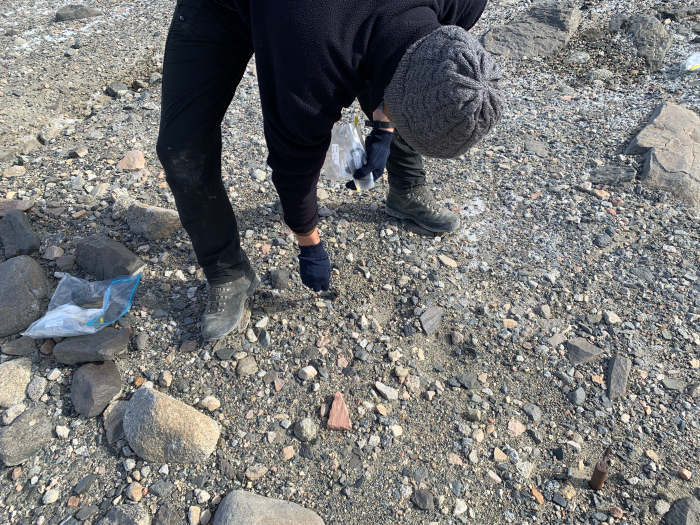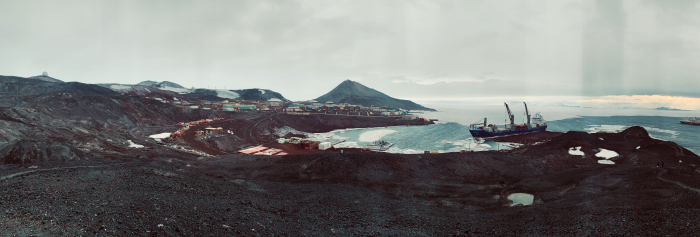A River Runs Through It
We recently came back from sampling in Wright Valley which is parallel to Taylor Valley. Wright Valley is a little dryer with fewer glaciers. It does have a glacier blocking the ocean side - causing the meltwater stream to flow away from McMurdo Sound. The result is Antarctica's longest river.

As the longest river, it's not very long. About 20 miles long and it flows into beautiful Lake Vanda. The lakes in the Dry Valleys don't have outlets so the journey of the river ends there, with water evaporating or sublimating as fast as it collects. In some years the flow is so low that the river doesn't make it to Lake Vanda.
We came here to support some research on the Eudorylaimus nematode habitats and distribution work. While there, Dr. Jeb Barrett described this type of community called a hypolith. Hypoliths are organisms that live on rocks - either underground or inside cracks and crevices. If you read my post about endoliths - they are like that but outside. They take this lifestyle for all the same reasons - protection from low temperatures and drying, access to nutrients and moisture, and protection from UV radiation. Jeb gave Ariel and me a tutorial on how to find these creatures.

The hypoliths prefer quartz rocks not much bigger than a golf ball. They need the rock to be embedded in the substrate and the soil needs to have some moisture but not be wet. Onyx river was a great place to find these. The conditions along the river and the available rock types meant that it was pretty easy to find them. We collected a few small samples and put the rest back to continue growing. As with most organisms in Antarctica, growth is very slow so minimizing our impact is essential.

Oh - I found this weird rock. A cool thing about Antarctic rocks is that they weather but often don't erode (I hope my students get the distinction). You often find rocks weathered apart but all the parts are still sitting there, together. This weird rock and how it came to be is the story of the polygons. All over the Dry Valleys there are these structures called polygons covering the valley floors. Polygons are the shape that results when frozen ground with dry soil is pushed up from the freeze that cycle. These shapes are about 20-40 meters wide and might remind you of a beehive pattern. I have seen several times now where there is a boulder in the path of a polygon crack and it is cracked in half. This is the biggest I've seen. I would love be there when this happens. I wonder if it is fast or slow?


Make sure to watch my video about hypoliths and the Onyx River!
Gearing up for Resupply
Recently the McMurdo contractors began getting the ice pier ready for the supply ships to come in. The ice pier is a giant, thick piece of ice covered in rocks. It allows big ships to tie off to it so they can load and offload cargo without a large port. In the picture you can se the first vessel of the season, the Ocean Giant, from the trail above Hut Point.
Here is a cool link if you want to keep track of McMurdo and its activities McMurdo Ice Pier Webcam.



Comments